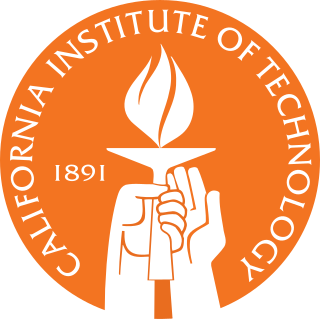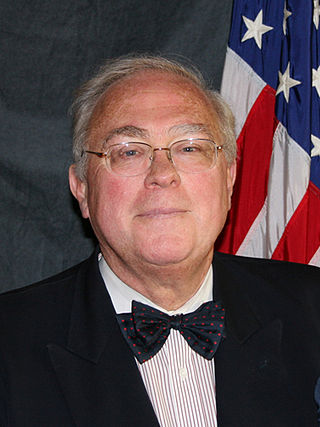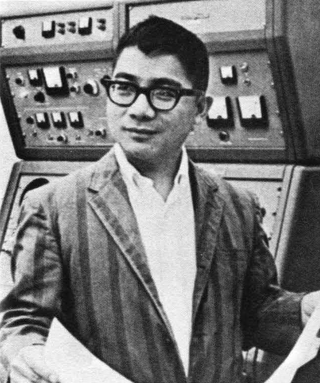
The California Institute of Technology (branded as Caltech) is a private research university in Pasadena, California. The university is responsible for many modern scientific advancements and is among a small group of institutes of technology in the United States which are strongly devoted to the instruction of pure and applied sciences. Due to its history of technological innovation, Caltech has been considered to be one of the world's most prestigious universities.

Occidental College is a private liberal arts college in Los Angeles, California. Founded in 1887 as a coeducational college by clergy and members of the Presbyterian Church, it became non-sectarian in 1910. It is one of the oldest liberal arts colleges on the West Coast of the United States.

The Snowball Earth is a geohistorical hypothesis that proposes during one or more of Earth's icehouse climates, the planet's surface became entirely or nearly entirely frozen with no liquid oceanic or surface water exposed to the atmosphere. The most academically referred period of such global glaciation is believed to have occurred sometime before 650 mya during the Cryogenian period.

Robert Andrews Millikan was an American experimental physicist who won the Nobel Prize for Physics in 1923 for the measurement of the elementary electric charge and for his work on the photoelectric effect.

Naval Air Weapons Station (NAWS) China Lake is a large military installation in California that supports the research, testing and evaluation programs of the United States Navy. It is part of Navy Region Southwest under Commander, Navy Installations Command, and was originally known as Naval Ordnance Test Station (NOTS).

Jacqueline K. Barton, is an American chemist. She worked as a professor of chemistry at Hunter College (1980–82), and at Columbia University (1983–89) before joining the California Institute of Technology. In 1997 she became the Arthur and Marian Hanisch Memorial Professor of Chemistry and from 2009 to 2019, the Norman Davidson Leadership Chair of the Division of Chemistry and Chemical Engineering at Caltech. She currently is the John G. Kirkwood and Arthur A. Noyes Professor of Chemistry, Emerita.

Sandra Tsing Loh is an American writer, actress, radio personality, and former professor of art at the University of California, Irvine.

Charles Elachi is a Lebanese-American professor (emeritus) of electrical engineering and planetary science at the California Institute of Technology (Caltech). From 2001 to 2016 he was the 8th director of the Jet Propulsion Laboratory and vice president of Caltech.

Kevin Owen Starr was an American historian and California's state librarian, best known for his multi-volume series on the history of California, collectively called "Americans and the California Dream."

The Newport–Inglewood Fault is a right-lateral strike-slip fault in Southern California. The fault extends for 47 mi (76 km) from Culver City southeast through Inglewood and other coastal communities to Newport Beach at which point the fault extends east-southeast into the Pacific Ocean where it is known as the Rose Canyon Fault. The fault can be inferred on the Earth's surface as passing along and through a line of hills extending from Signal Hill to Culver City. The fault has a slip rate of approximately 0.6 mm (0.024 in)/year and is predicted to be capable of a 6.0–7.4 magnitude earthquake on the moment magnitude scale. A 2017 study concluded that, together, the Newport–Inglewood Fault and Rose Canyon Fault could produce an earthquake of 7.3 or 7.4 magnitude.
Kate Hutton, nicknamed the Earthquake Lady, Dr. Kate, or Earthquake Kate, is a former staff seismologist at the California Institute of Technology in Pasadena, California, where she monitored Southern California's earthquake activity for 37 years.

John Dombrowski Roberts was an American chemist. He made contributions to the integration of physical chemistry, spectroscopy, and organic chemistry for the understanding of chemical reaction rates. Another characteristic of Roberts' work was the early use of NMR, focusing on the concept of spin coupling.

Lucile M. Jones is a seismologist and public voice for earthquake science and earthquake safety in California. One of the foremost and trusted public authorities on earthquakes, Jones is viewed by many in Southern California as "the Beyoncé of earthquakes" who is frequently called up on to provide information on recent earthquakes.

Heinz Adolf Lowenstam was a German-born, Jewish-American paleoecologist celebrated for his discoveries in biomineralization: that living organisms manufacture substances such as the iron-containing mineral magnetite within their bodies. He is also renowned for his pioneering research on coral reefs and their influence on biologic processes in the geologic record.
Kerry E. Sieh is an American geologist and seismologist.
Robert Phillip Sharp was an American geomorphologist and expert on the geological surfaces of the Earth and the planet Mars. Sharp served as the chairman of the Division of Geological Sciences at California Institute of Technology (Caltech) from 1952 to 1968. He built the modern department and especially recruited new faculty in geochemistry, tectonic geomorphology, planetary science, and field geology.
Lawrence Austin Frakes is an American-born geologist and paleoclimatologist residing in Australia since 1973. He holds (emeritus) the Douglas Mawson Professor of Geology chair, at the University of Adelaide, in South Australia. Mount Frakes, a shield volcano in the Crary Mountains of Antarctica, is named for him.

Joseph Coriaty, FAIA, is an American architect.

Sunney Ignatius Chan is an American-born biophysical chemist. His work primarily focused on the use of various magnetic resonance spectroscopic and other physical chemical techniques in the analysis of various biochemical and biological problems.














